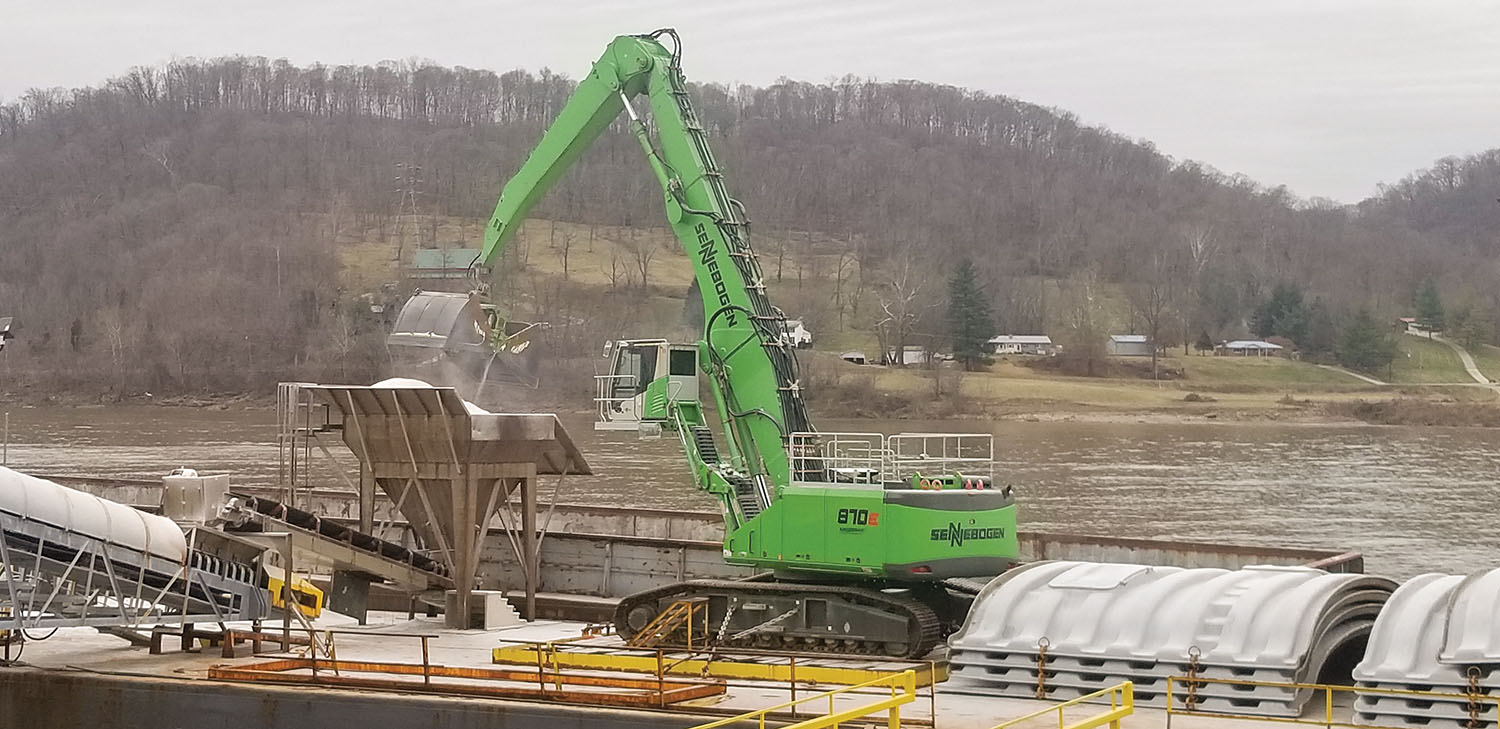Recent upgrades to the conveyor system at Watco’s barge terminal in Cincinnati led to the long-awaited replacement of the port’s Sennebogen 870 material handler.
“There was nothing left of it,” said terminal manager Rusty Smith. “This is a salt terminal; 98 percent of what we move here is salt.”
Even with a protective Nyalic coating, digging into the corrosive salt every day will take a hard toll on swing machines. Smith says that the damaging effects of salt-handling will be evident within four or five years of service. Watco’s 870 machine put in a solid nine years in Cincinnati before being retired recently. In its place is a new, larger Sennebogen 875 R-HD.
The latest changes at the terminal include wider, faster conveyors, so Watco upsized to the 875 with a 6-yard bucket to keep pace with the increased capacity. Smith reports that the terminal is now moving upwards of 400,000 tons per year for leading brands that operate salt processing facilities nearby.
“Watco is pretty sold on Sennebogen,” Smith said. “Our people there make sure we have the equipment we need at each terminal.”
The new 875 R-HD was one of the first models from Sennebogen to feature its innovative “Green Hybrid” energy recovery system. Its distinctive, oversized center cylinder, mounted between the two boom lift cylinders, uses the weight of the boom on each downstroke to capture energy in a bank of accumulators at the rear of the machine. This energy is then used to provide hydraulic power to the boom on the next lift cycle.
Other facilities that operate the 875 have reported savings in their energy cost, diesel or electric, of as much as 30 percent. The newest edition of the 875 incorporates updates to its boom engineering, achieving a lighter weight while increasing its lift capacity.
The “Green Hybrid” system delivers its maximum benefit in applications that require frequent up and down cycles. As a result, barge facilities such as Watco’s are ideal for the 875 and Sennebogen’s other hybrid models.
The 875 is a 150-ton machine with a nominal reach of 89 feet and maximum load capacity of 7.5 tons. Standard configurations are also available with a reach of 85 and 95 feet. The unit in Cincinnati is powered by a Cummins 595 hp. (391 kw.) Tier 4 diesel engine. Electrically powered versions are also offered with a 430 kw. motor.
“This 875 has done all we ask it to,” Smith said. “Lift, reach, power … and our operators are happy with their new space.” While the previous 870 was equipped with Sennebogen’s elevating Maxcab, the cab of the new machine can also move forward and back to allow a better view into the barge hold. As well as helping the operator move material more efficiently, the “up and out” cab capability improves safety for skid steers and crews working inside the hold.
Caption for photo: The hydraulic cab of the new machine can move forward and back to allow a better view into the barge hold. (Photo courtesy of Sennebogen)




